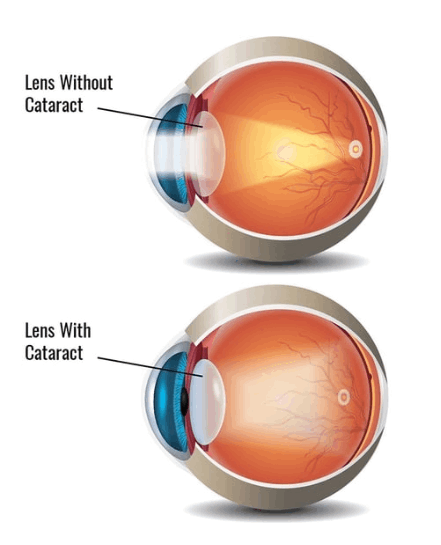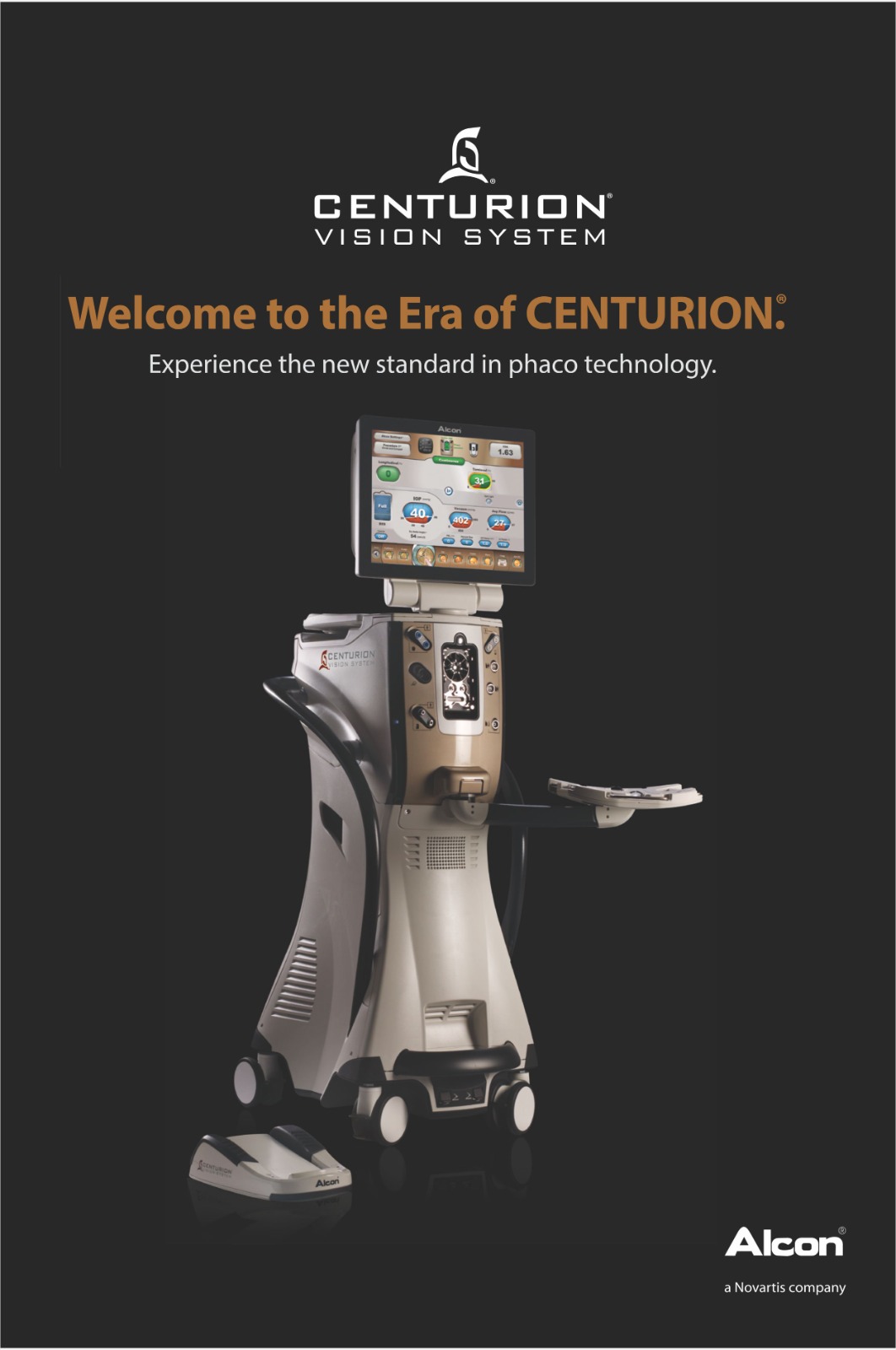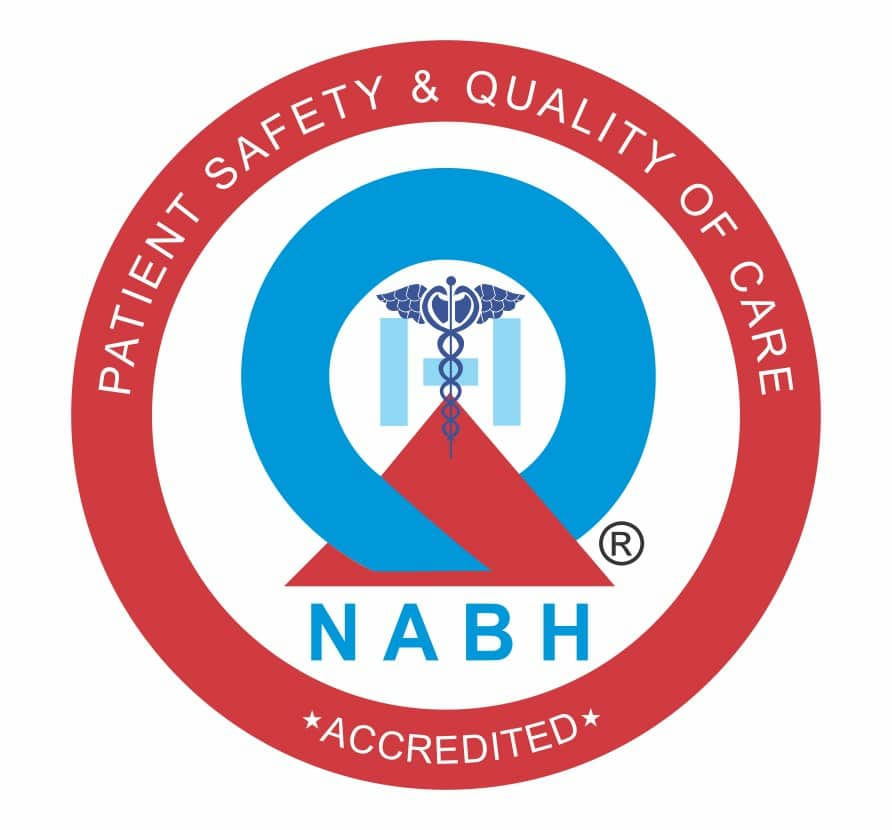A cataract is cloudiness of the lens (the normally clear structure in your eye which focuses the light). They can develop in one or both eyes.
PUNE’S LEADING HOSPITAL FOR CATARACT SURGERY
Cataract is caused by the clouding of the natural lens of the eye and usually develops as a result of old age, but may occur in infants and young children too. This results in blurred vision, glare, and sensitivity to bright lights. As the disease progresses, it leads to painless, progressive decrease in vision which can also result in a poor quality of life, interfering with day-to-day activities like driving and reading.
A healthy lifestyle helps prevent cataract, but in case if it happens, it is managed by spectacles. However, as the disease progresses, or if the central vision deteriorates, the only option for its management is a surgery. Cataract surgery in Pune entails sucking out the natural lens after emulsifying it inside the eye by a process known as Phacoemulsification. After this, a customized, artificial intraocular lens (called IOL) is placed in its position which restores natural and normal vision.

INTRODUCING OUR NEW FOUNTAINHEAD - AMERICAN BASED ALCON CENTURIAN GOLD

Now cataract surgery in just 7 minutes
World class American "ALCON" brand Centurion Gold Phaco technology now in Pune at Dr Dudhbhate Netralay and Retina Centre
Highlights
- No Anaesthesia
- No Injection
- No Stitches
- No Cuts
- No Bandage
- Yes get crystal Clear Vision
Centurion Vision System "ALCON USA" benefits patients with latest technology over traditional Phaco Machine Pain less surgery -
- Less IOP fluctuation - due to varsus gravity and pressurized fluidics
- Surgery perfomed by maintaining normal pressure
- Due to low pressure of machine, patient does not feel any discomfort.
- Surgery in just 6 to 7 minutes.
- Endothelial cells are minimally burnt
- Patient gets Crystal clear vision
- The mechanical energy used during the surgery is reduced by 30 times, so there is no damage or swelling to the iris after the surgery.
CATEGORIES
Who is At a Risk of Cataract?
- Eye injuries
- People with Diabetes
- Exposure to ultraviolet rays
- People with prolonged use of steroids
- People whose age is more than 60 years
How Do I Know if I Need a Cataract Surgery?
This is where cataract surgeon at Dr. Dudhabhate Netralaya & Retina Centre come into the picture. After a thorough and comprehensive eye evaluation, our doctors will discuss with you the diagnosis of cataract and your best corrected visual sharpness (your vision with glasses). They will also help you judge for yourself, with trial lenses, if you are comfortable with this vision with glasses in your day to day life or not.
STEP 1 :
CATARACTOUS LENS REMOVAL
Extracapsular Cataract Extraction
In this procedure, the cataractous lens is broken up using either a laser (latest: AI-LenSx Femto) or using ultrasound waves (Phaco emulsification). The broken lens is then extracted through a tiny hollow tube. The normal lens capsule surrounding the lens is left intact.
Intra-capsular Cataract Removal
In this procedure, the cataractous lens is taken out as a whole by making a big incision cut on the eye then the incision is closed using 5 to 7 stitches. This procedure has become obsolete now.
STEP 2 :
REPLACEMENT FOR THE LENS
Once the lens is removed,it may be replaced by one of the three options :
- A contact lens, or
- Special cataract glasses with very powerful magnification.
- An intraocular lens (an artificial lens placed in the eye during cataract surgery)
Latest Surgical Techniques for Cataract sManagement Used at Dr. Dudhabhate Netralaya & Retina Centre
Dr. Dudhabhate Netralaya & Retina Centre has always been a pioneer when it comes to the use of latest technology and techniques for surgeries. Below are the ones that can be used for the treatment of cataract in Pune
TREATMENT VIA CATARACT SURGERY
LASER CATARACT SURGERY
-
Micro-incision or Regular Phaco Cataract
Surgery
In conventional phacoemulsification and Micro-incision cataract surgery, a capsulotomy is performed manually using forceps or a bent needle. It is through this opening that the ultrasound emulsifies the natural lens of the eye before it is sucked out of the eye using a vacuum. When performed manually, this capsulotomy is not perfectly circular, & in some cases, the capsulotomy may “run” to one side, resulting in a tear of the capsular bag. This means that the IOL implanted may not as stable as it should be -
Cost of Cataract Surgery in Pune
The price of cataract surgery depends upon the age of the person, the intraocular lens chosen as well as the previous history of eye procedures. Depending upon these factors, cataract surgery cost can range from Rs. 15000 to Rs 1,00,000 . The exact price can be determined by visiting our hospital and getting an appointment with our cataract surgeons in pune who will determine the exact condition of the eyes and can give you an exact cost estimate. -
Choosing the Best Eye Hospital for Cataract Surgery in
Pune
In case you experience any visual symptoms like a decrease in vision, blurring, or glare, you should consult with your ophthalmologist to ascertain the reason. Make sure to ask as many questions as possible and when you are answering questions; be very particular about what you are exactly experiencing in the eye.
In case, you have been diagnosed with cataract, or are apprehensive that you may have a cataract, do not worry. Dr. Dudhabhate Netralaya & Retina Centre, which is one of the most advanced centre in the country and a top eye hospital in pune for cataract surgery, can offer you an expert consultation for all your eye-related problems.
We have all the three advanced techniques of painless, stitch-less and bladeless cataract surgery with IOL implantation available at all our state of the art centres that are an example of excellence in ophthalmology and are powered by the most proficient and skilled team of eye care professionals.
FAQS ABOUT CATARACT
There is a painless gradual decrease in vision. Early cataract is associated with difficulty in reading in normal light conditions, and extra illumination is required. Excessive glare and reduced sharpness can make night driving difficult. Some experience rapid changes in the number / power of glasses. In advanced cases there is complete loss of sight and lens becomes pearly white in colour. If you experience any of the following issues, schedule an appointment with your eye doctor immediately:
- Cloudy or blurry vision
- Double vision (diplopia)
- Fading of colours
- Seeing halos around lights
- An increased sensitivity to glare
- A distortion of vision that makes objects appear as if you’re looking at them through a veil.
There is a painless progressive reduction of vision. Initially some help is achieved by changing the spectacle number, but in advance cases the spectacles also prove to be ineffective. Cataracts are the world’s leading cause of blindness, accounting for approximately 42 percent of all cases of blindness in all the countries, luckily its easily treatable in the present age through a simple surgery
Cataract is a long-term problem that usually starts developing around the age of 40 and intensifies by the time an individual attains the age of 50 to 60. It is also caused by eye-trauma, long-term diabetes, corticosteroid medications or radiation treatments.
Some infants are also afflicted by cataract, which is caused as a result of infections during pregnancy. The disorder can also be a symptomatic of metabolic disease affecting the body’s processing of carbohydrates, amino acids, calcium or copper among infants and young kids. If left untreated, cataracts might also lead to blindness.
There is no medication for treating cataract but surgery has long proven to be an effective treatment of the disorder. With the advancement in technology, it is now safer than ever to get your vision corrected with minimal risks to your vision.
The decision to have surgery depends on the degree to which your vision in impaired. Although some persons with cataracts find that their vision improves by using eyeglasses, magnifying lenses or stronger lighting, the only real way to cure cataracts is by surgery. If cataracts affect both eyes, each eye operation is scheduled and performed separately
The common surgical procedures are :
- Extra-capsular cataract extraction. In this procedure, the lens is either broken up using ultrasound waves (a process called phacoemulsification, or phaco), then extracted through a tiny hollow tube, or it is removed in one piece. The normal lens capsule surrounding the lens is left intact.
- Intra-capsular cataract extraction. In this technique, both the lens and the lens capsule are removed. This technique is now performed only in very rare cases.
Once the lens is removed, it may be replaced by one of three options :
- An intraocular lens (an artificial lens placed in the eye during cataract surgery);
- A contact lens; or
- Special cataract glasses with very powerful magnification.
Currently, about 99 percent or more of patients use an intraocular lens.
The lens which is placed in the eye is of a fixed power. The power of the lens for a particular eye is calculated with the help of an eye ultrasound. After surgery, routine distance activities can be carried out without glasses. For reading, glasses would be required.
You may opt to choose for lenses which provide you vision for distance and near. in such cases dependency on glasses are reduced.
It is easier and safer to operate on an immature cataract. As the cataract matures, it tends to become harder requiring more energy to do the same job. Beyond a certain limit, excess energy may cause harm to the eye.
The Blood Pressure (BP) and Blood Sugar should be in control. E.C.G and a medical check-up may be required in some cases.
Cataract surgery has now become a refractive surgery and the goal is not just to to remove the opacified cataractous lens but also to reduce dependency on glasses.
A routine Cataract surgery can only correct the spherical component of the eye leaving behind the cylinder power which has to be later corrected by additional prescription glasses. With advancements in surgical techniques and IOL (artificial lens) designs, today both spherical and cylinder components of eye can easily be corrected with highest precision
The cylinder component in Cataract Surgery can be corrected by following ways Toric Lenses with Verion Digital Axis Marking: Toric lenses are special lenses which have both cylinder and spherical component build in one lens. Since cylinder axis varies in individual eyes, the lens has to be aligned to specific axis of the individual. In such cases even a minor deviation from the original axis can cause significant disturbance in final visual outcomes.
Now with the introduction of Verion Digital Axis Marking system, these toric lenses can be aligned with outmost precision, upto 1 degree.
Toric Lenses with Manual Marking: As discussed above, the final visual outcome in a toric lens depends on how precisely it is aligned to the original cylindrical axis of eye. Since the manual markings cannot be as precise as digital markings, the manual system may give slightly inferior results compared to the digital system
Modern cataract surgery takes just a few minutes to administer and the recovery period is also minimal. In the first week after surgery, it generally is recommended that the patient keep his or her eye covered at all times, either with eyeglasses or an eye shield, to protect it from being bumped or rubbed. A small amount of pressure can easily open the incision, and protecting the eye prevents this. The patient is also asked to refrain from
- Bending with the head below the waist,
- Lifting more than 10 pounds, and
- Straining (on the toilet, for example) to the point of holding one’s breath.
A few weeks after the surgery, the patient may be prescribed glasses for near work. The artificial lenses last a lifetime and complications due to the lens are rare and are easily corrected.
Call your eye-doctor whenever you have trouble seeing clearly. If you are older than 40, schedule an eye examination with your doctor every two years, even if you have not noticed any change in your vision
What to anticipate after the operation?
You may go home with an
eye pad and shield, or just a shield. The pad can be removed after the
first hour. The shield should be worn at night for the first week. Your
vision will normally be much better by Day 2. Sometimes there can be
some blurring or misting in the eye, but this should improve over the
course of the day. If you feel your vision is becoming more blurred,
contact your hospital immediately.
The majority of patients with cataracts are elderly and usually retired from work. Cataracts can, however, also occur in much younger patients. Every person recovers differently and has different needs. Cataract surgery normally has a very quick recovery and the majority of individuals can normally get back to work almost immediately. Jobs that are more physically demanding and involve exposure to liquids or dust might require a more graduated return to full activities, but are best discussed with your surgeon.
Yes. These are called multifocal intra-ocular lenses or extended range sense sand give good vision without glasses for distance and reading. However in certain eye condition, a need for using a little spectacle correction may be felt for very fine work
Today, cataract surgery is not simply about removing the cataract from eye and replacing it with an IOL (Intra Ocular Lenses). A lot depends on a near perfect IOL power calculation. The vision can therefore be customized to suit your requirement i.e. distance dominant, near dominant or intermediate. There are two ways to calculate the IOL power


